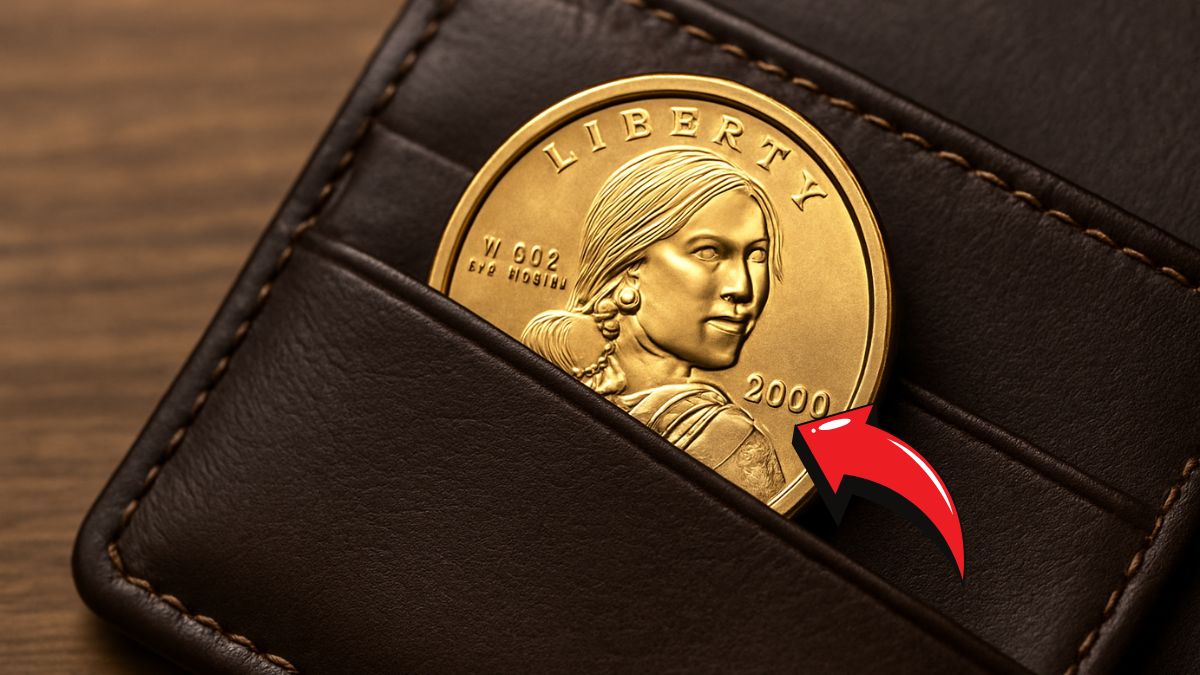Imagine discovering a coin in your wallet that’s worth thousands—or even millions—of dollars. The Sacagawea dollar, introduced in 2000, might just be that hidden gem.
While most are worth their face value, certain rare versions are still in circulation and highly sought after by collectors.
This article delves into the fascinating world of these rare coins, highlighting their unique features, current market values, and how you might identify one.
What Is the Sacagawea Dollar?
The Sacagawea dollar is a U.S. one-dollar coin first minted in 2000. It features Sacagawea, the Shoshone guide of the Lewis and Clark Expedition, carrying her infant son, Jean Baptiste, on the obverse side.
The reverse initially showcased a soaring eagle, symbolizing peace and freedom. These coins have a distinctive golden hue, thanks to their manganese-brass composition.
Rare Sacagawea Dollars to Look For
While most Sacagawea dollars are common, a few rare versions have become highly valuable:
1. 2000-P Cheerios Dollar
In 2000, General Mills included 5,500 Sacagawea dollars in Cheerios cereal boxes as a promotion.
These coins, known as Cheerios Dollars, have a unique pattern of tail feathers on the eagle, distinguishing them from regular issues. Depending on their condition, they can fetch over $2,000 at auction.
2. 2000-P Wounded Eagle
This variety features a die error resulting in a line through the eagle’s body, resembling a wound.
Collectors refer to it as the Wounded Eagle. These coins are rare and can be worth several hundred dollars, depending on their condition.
3. 2000-P Sacagawea Dollar – Washington Quarter Mule
One of the most famous mint errors, this coin combines the obverse of a Washington quarter with the reverse of a Sacagawea dollar. Only a few dozen are known to exist, and one sold for $88,125 in 2013.
4. 2000-W Gold Sacagawea Dollar
In 1999, the U.S. Mint struck 39 Sacagawea dollars in 22-karat gold as a test. Twelve of these coins were sent into space aboard the Space Shuttle Columbia.
These coins are not in circulation and are housed at Fort Knox, making them extremely rare and valuable.
Comparison Table of Rare Sacagawea Dollars
| Coin Variety | Unique Feature | Estimated Value | Notes |
|---|---|---|---|
| 2000-P Cheerios Dollar | Detailed tail feathers | $2,000+ | Distributed in Cheerios boxes |
| 2000-P Wounded Eagle | Die gouge on eagle’s body | $275 – $500+ | Error coin with distinctive mark |
| 2000-P Sacagawea Dollar – Quarter Mule | Quarter obverse, dollar reverse | $88,125 (sold in 2013) | Extremely rare mint error |
| 2000-W Gold Sacagawea Dollar | 22-karat gold, flown in space | Not for sale | Housed at Fort Knox, not in circulation |
Tips for Identifying Rare Sacagawea Dollars
- Check the Date and Mint Mark: Look for coins dated 2000 with a ‘P’ mint mark.
- Examine the Eagle’s Tail Feathers: The Cheerios Dollar has enhanced, detailed tail feathers.
- Look for Die Errors: The Wounded Eagle variety has a noticeable line through the eagle’s body.
- Identify Mule Errors: The Quarter Mule has George Washington’s portrait on the obverse instead of Sacagawea.
- Avoid Cleaning the Coin: Cleaning can reduce a coin’s value.
The Sacagawea dollar holds a special place in U.S. coinage history, not just for its design but also for the rare varieties that have captivated collectors.
While most are worth their face value, certain versions like the Cheerios Dollar, Wounded Eagle, and Quarter Mule can be worth thousands.
By examining the details and consulting experts, you might discover a valuable treasure in your pocket change.
FAQs
How can I determine if my Sacagawea dollar is a rare variety?
Examine the coin’s date, mint mark, and design details. Comparing it to known rare varieties can help. Consulting a professional coin appraiser is also recommended.
Are all 2000-P Sacagawea dollars valuable?
No, only specific varieties like the Cheerios Dollar, Wounded Eagle, and Quarter Mule have significant value. Regular 2000-P coins are typically worth face value.
Where can I sell a rare Sacagawea dollar?
Rare coins can be sold through reputable coin dealers, auction houses, or online marketplaces specializing in numismatics.

